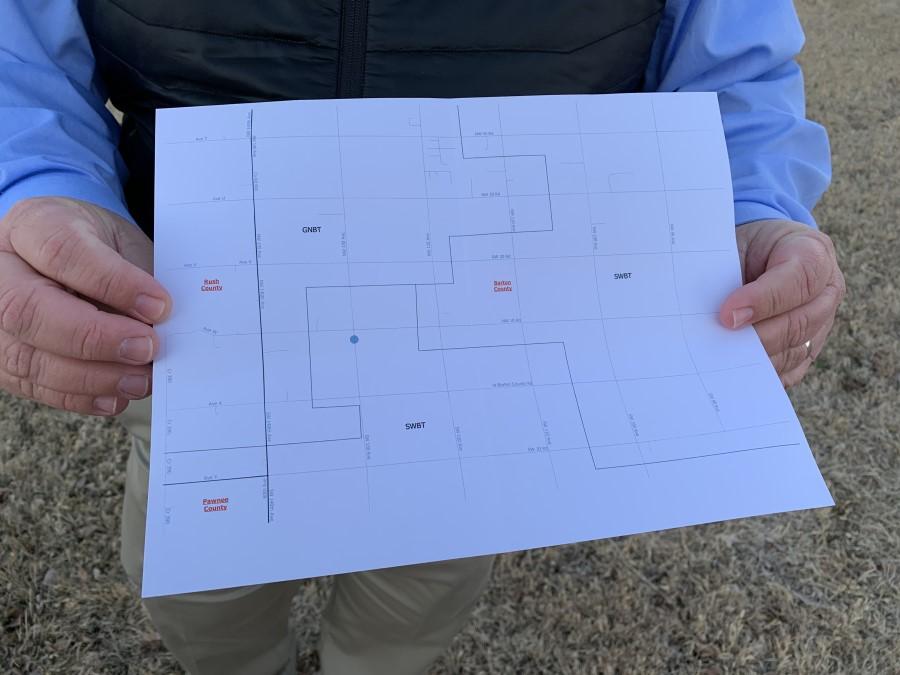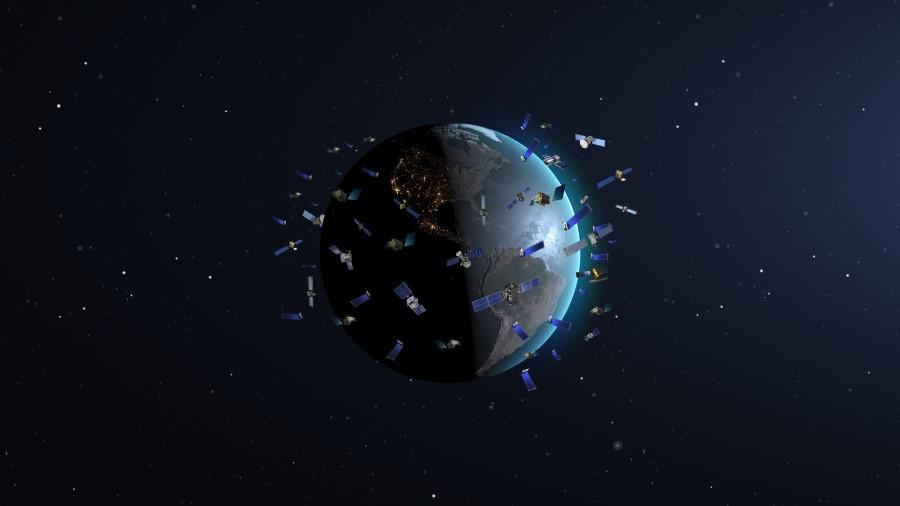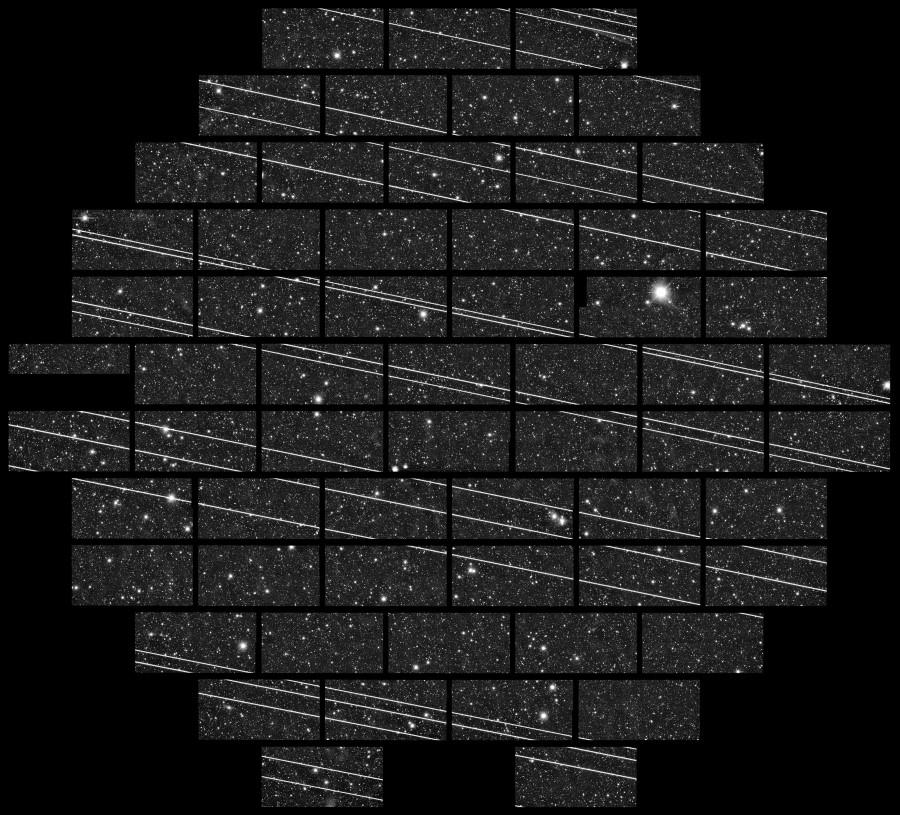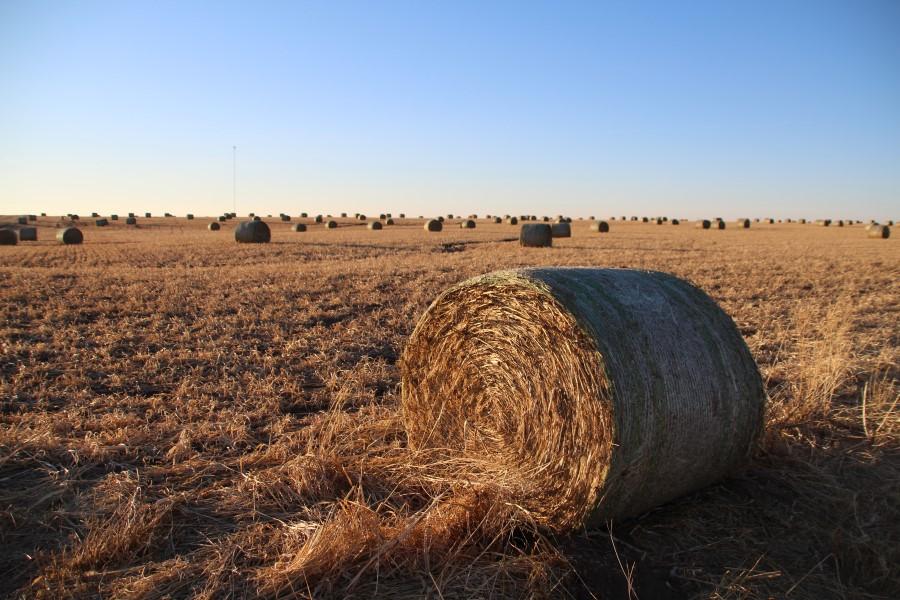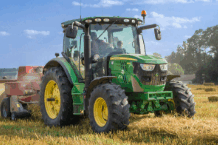By DAVID CONDOS • FEB 1, 2021
Joey Bahr stands near a sign marking the buried cable that he can’t tap into for his home internet, even though it travels through his property.
GREAT BEND, Kansas — Joey Bahr walks out to the front of his yard along a blacktop county road. He stops in a ditch and points to an orange-and-black sign that marks a buried fiber-optic cable.
But for Bahr, the cable running beneath his feet is off-limits. It’s owned by a neighboring internet service provider and is merely passing through on its way to a nearby town.
“It’s just maddening,” Bahr said. “We’re at the end of the line basically.”
Bahr’s story illustrates just how out-of-reach broadband remains for tens of millions of people in rural America. Nearly 9% of Kansas households — roughly 130,000 — still don’t have access to high-speed internet.
Yet the promise of a future with broadband for all Kansans, no matter how remote, might rest in the wide-open skies over the Bahrs’ home — and a plan to send Wi-Fi to a future Mars colony.
Beaming the internet down from satellites might leapfrog the logistical and financial barriers that leave so many rural homes — and those just outside the city limits — on the wrong side of the digital divide. But to do that, the next generation of satellite internet service will need to be better than the space-based stuff that’s been around for a while.
“Existing satellite internet is better than nothing,” said Daniel Andresen, a computer science professor at Kansas State University, “but that’s about all you can say about it.”
He said customers often have to deal with web pages that load slowly due to bottlenecked bandwidth and video calls that appear choppy because of high latency, or lag times. They sometimes lose service completely if there is rain or snow.
Left behind
Andresen said Kansans who live in towns — even very small towns — can generally skip satellite internet and connect their homes with fiber, cable or DSL.
“But if somebody wants to live … two miles outside of town,” Andresen said, “good luck getting any of the above.”
The basic problem is that it’s not usually worth it to internet providers to string broadband lines out to places where people don’t live close to each other. Each mile of fiber costs more than $27,000 to install. That might pay off in Wichita, which has 2,300 potential users per square mile, but not so much in Great Bend’s Barton County, with only 31 people per square mile.
Andresen says that leaves rural Kansans behind, especially as the pandemic moves so much of Americans’ personal and professional lives online.
“It used to be that, ‘Internet access is kind of nice, but you go into town once a week and use the library’s and it’s fine,’” Andresen said. “Now, it’s vital.”
New 5G cellular technology might improve wireless internet speeds for some rural homes, but Andresen said it’s only likely to help someone who already has good 4G coverage. The high-frequency wavelengths that enable 5G’s fast speeds don’t travel as far as 4G waves. And a tree or hill in the wrong place could block the signal.
“5G could turn kind-of-haves into haves, but won’t turn have-nots into haves,” Andresen said. “You end up with a situation where good connectivity tends to be — pretty much no matter how much money you’re willing to fling at it — unavailable.”
But the richest man on the planet, Elon Musk, has a plan to send humans to Mars. And almost accidentally, that plan might just open the door to getting a better YouTube feed to the ranches and farms of Kansas.
To the stars
For Elon Musk’s aerospace endeavor, SpaceX, the Starlink project is part fundraiser, part test run. The company needs money from internet customers to fund its ambitions in the heavens, like space tourism and colonizing the red planet. SpaceX also wants to deliver high-speed internet to those future Martians — who, like the people of rural Kansas, will be spread across a sparsely populated landscape.
Unlike traditional satellites that sit roughly 22,000 miles out into space, Starlink satellites beam data from a mere 340 miles above the Earth. Theoretically, these low-Earth orbit satellites could provide even better speeds than wired internet because light travels 50% faster through the vacuum of space than it does through the glass of fiber-optic cables.
So far, SpaceX has launched about 1,000 satellites floating above a thin strip of the U.S.-Canadian border. Kansans should be able to try Starlink for themselves later this year when SpaceX activates another belt of satellites over the Midwest.
But travel three states to the north of here, and that internet future already exists.
“The speeds and the latency they’re advertising appear to be holding true,” said North Dakota Chief Technology Officer Duane Schell. “So, yeah, there’s a lot of excitement about it.”
Schell is talking with SpaceX about testing Starlink in state parks and wildlife management areas in North Dakota, where Starlink satellites already cover most of the state. But he also sees it as a way to shore up the future of the state’s rural economy, from telecommuting to high-tech farming.
“Without that broadband,” Schell said, “you’re simply not going to be able to compete.”
The space rush
Starlink isn’t alone on the mission to bring satellite broadband to remote places like western Kansas. Amazon CEO Jeff Bezos hired a former SpaceX executive to lead his company’s satellite internet venture, Project Kuiper. HughesNet, already a major satellite internet provider in rural America, partnered with OneWeb to power a network of 650 satellites by the end of this year.
Derek Smashey, a financial analyst with Scout Investments in Kansas City, said satellite internet could eventually serve 15-20% of the population. So, Starlink’s $99 monthly fees could cover the project’s estimated $10 billion price tag.
“It looks to us like that could be a $20 billion-plus dollar market just in the United States alone,” Smashey said. “I wouldn’t want to bet against people like Elon Musk and Jeff Bezos.”
Eventually, SpaceX plans to build a constellation of Starlink satellites that deliver broadband not only to rural America, but also to arctic research stations, tanker ships at sea and other remote locations around the globe. The company has federal approval to launch 12,000 satellites and has already filed paperwork for 30,000 more — 10 times the number in the sky now.
But that worries some people who like the sky the way it is.
‘It will be everywhere’
“The thought of having to see the stars through a grid of crawling satellites, that’s pretty horrifying to me,” said Samantha Lawler, an astronomy professor at the University of Regina in Canada. “This isn’t like light pollution from a city where you can go camping in the mountains and see the stars perfectly. … It will be everywhere.”
Lawler lives on a farm in rural Saskatchewan, where she’s teaching classes via video using a home hotspot similar to what Joey Bahr uses in Kansas. But she’s afraid that advancing our connection to the internet could come at the expense of losing our connection to the stars.
“Humans have looked up at the stars since the dawn of humanity,” Lawler said. “That’s just such a huge part of being human that we are very much in danger of losing.”
In Barton County, Joey Bahr said living in a place where his three sons can gaze up at the night sky was one of the reasons he and his wife, Anita, moved out here seven years ago. But living here means they have to connect to the internet through a cell tower a few miles away and try to stay under their data cap of 15 gigabytes per month. It would take about six of those gigabytes to stream a single two-hour HD movie.
If they go over that limit, he said their internet speeds can slow down to 600 kilobytes per second — roughly 2% of the minimum speed in the federal definition of broadband.
The family reached a breaking point when their son tested positive for COVID-19 in the fall. Bahr and his wife suddenly needed to work from home, and their son used an iPad from school to keep up with his lessons. They decided to spend $200 on a second mobile hotspot just to get through the four-week quarantine.
“It’s a beautiful place. I love it,” Bahr said of their property. “Unfortunately, we are in kind of an internet no-man’s-land right now.”
David Condos covers western Kansas for High Plains Public Radio and the Kansas News Service. You can follow him on Twitter @davidcondos.
The Kansas News Service is a collaboration of KCUR, Kansas Public Radio, KMUW and High Plains Public Radio focused on health, the social determinants of health and their connection to public policy. Kansas News Service stories and photos may be republished by news media at no cost with proper attribution and a link to ksnewsservice.org.



